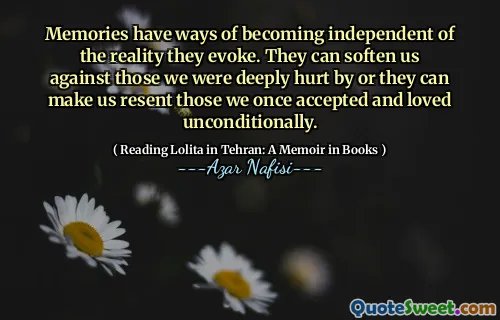
One cancels the other, and yet without one, the other is incomplete. In the first photograph, standing there in our black robes and scarves, we are as we had been shaped by someone else's dreams. In the second, we appear as we imagined ourselves. In neither could we feel completely at home.
📖 Azar Nafisi
In Azar Nafisi's memoir "Reading Lolita in Tehran", she reflects on the duality of identity through contrasting photographs. The first image represents her and her peers conforming to the expectations and dreams imposed on them by society, highlighted by their black robes and scarves. This appearance signifies a loss of individuality and the weight of external pressures defining who they are.
The second photograph captures their self-imagined identities, yet they still struggle to find a true sense of belonging in either portrayal. This sense of disconnection reveals a deeper exploration of personal versus societal identity, emphasizing how each portrayal, though distinct, remains incomplete without the other.











